Studio Visit: Ashley Bickerton
Ashley Bickerton (1959 – 2022) enjoyed what he described as “a long and often breathless career”, creating artworks spanning all manner of mediums and visual languages. Oscillating between dream and dystopia, beauty and the grotesque, Bickerton’s vibrant and intoxicating works cast a keen eye on humanity, culture and consumerism, and our place within the wider arc of time and history. His works are in the collections of major museums worldwide, including the Museum of Modern Art (New York), Tate Britain (London), the Whitney Museum of American Art (New York), and Hara Museum of Contemporary Art (Tokyo).
Bickerton will present works with Gajah Gallery at ART SG in 2023. He will also have a solo show at Gagosian New York, scheduled for early 2023.
Share this article:
By Tan Siuli
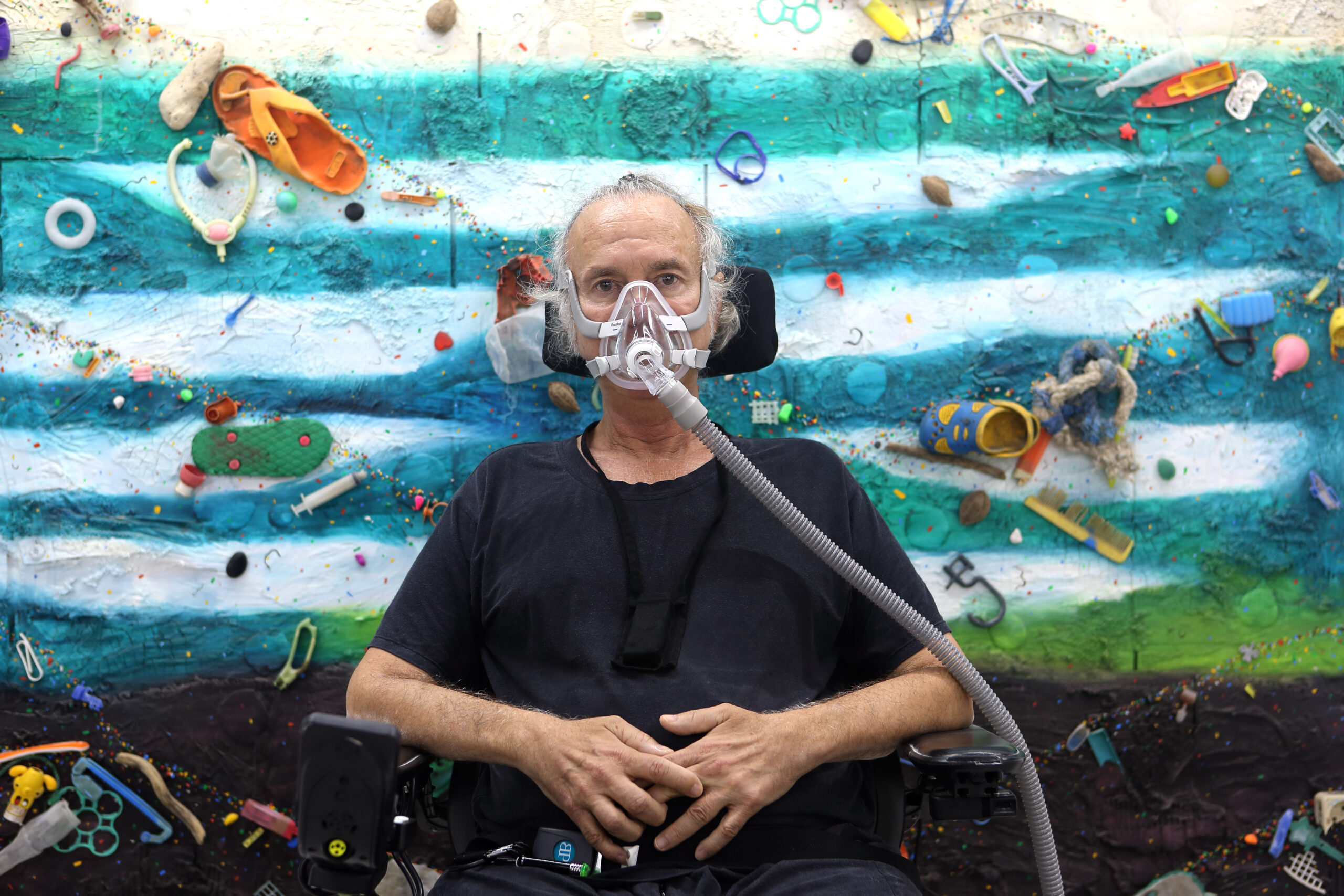
Ashley Bickerton in front of his ‘Flotsam’ painting. Image courtesy of the artist.
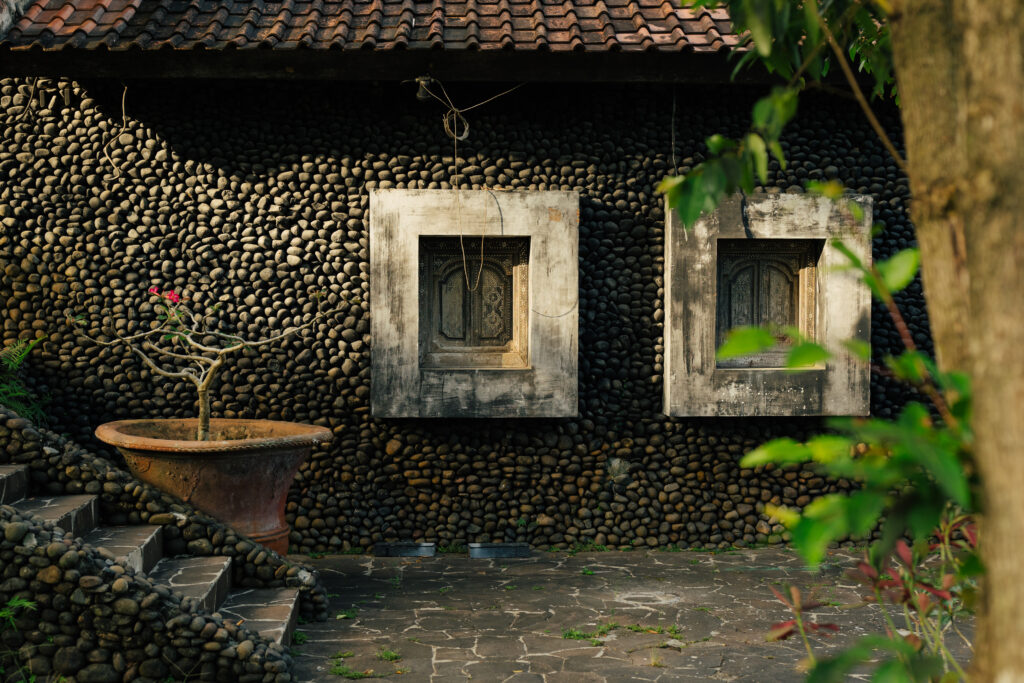
Ashley Bickerton’s home-studio in Bali
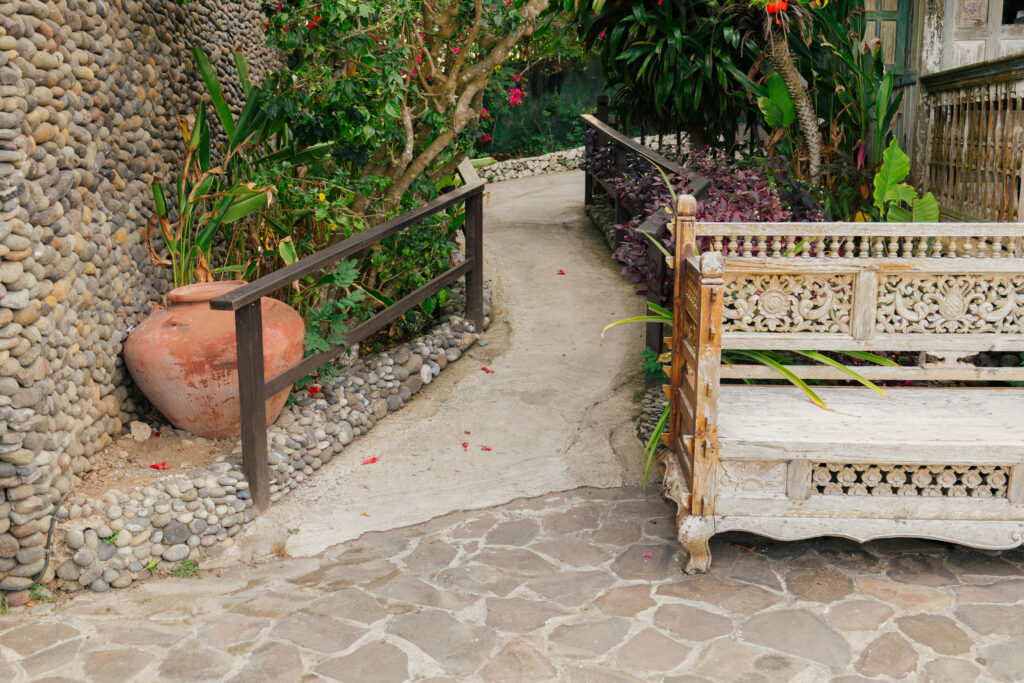
A ramp recently constructed in the compound, to accommodate Bickerton’s wheelchair
In October, Art SG visited Bickerton’s home-studio in Uluwatu, Bali, to interview the artist. Bickerton, who was diagnosed with ALS last year, was not able to do the interview as originally planned. On 30 November 2022, Bickerton succumbed to complications from his illness.
In this feature, ART SG looks back at Bickerton’s artistic journey, accompanied by photographs of his Bali studio, to remember an exceptional individual and his desire to connect with as many people as possible in his lifetime.
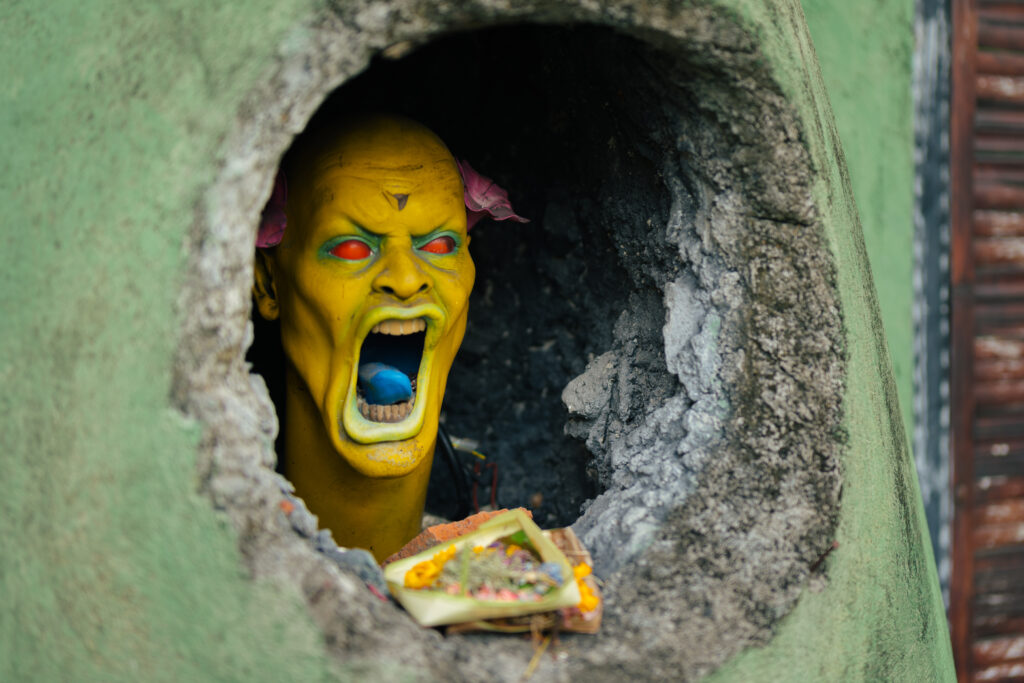
Entrance to Ashley Bickerton’s home-studio in Bali
Born in 1959 in Barbados, Ashley Bickerton’s peripatetic early years took him from Ghana to Guyana, England, Hawaii, the Balearic Islands and California, before he burst onto the New York art scene in the 1980s as part of the ‘Neo Geo’ group along with artists such as Jeff Koons and Peter Halley. His early works (the ‘wall contemplation units’ or ‘Susie boxes’) riffed on the formalist aesthetics of Minimalism and the readymade, layering these with symbols and logos that commented on pervasive consumerism and art as a cultural trophy.
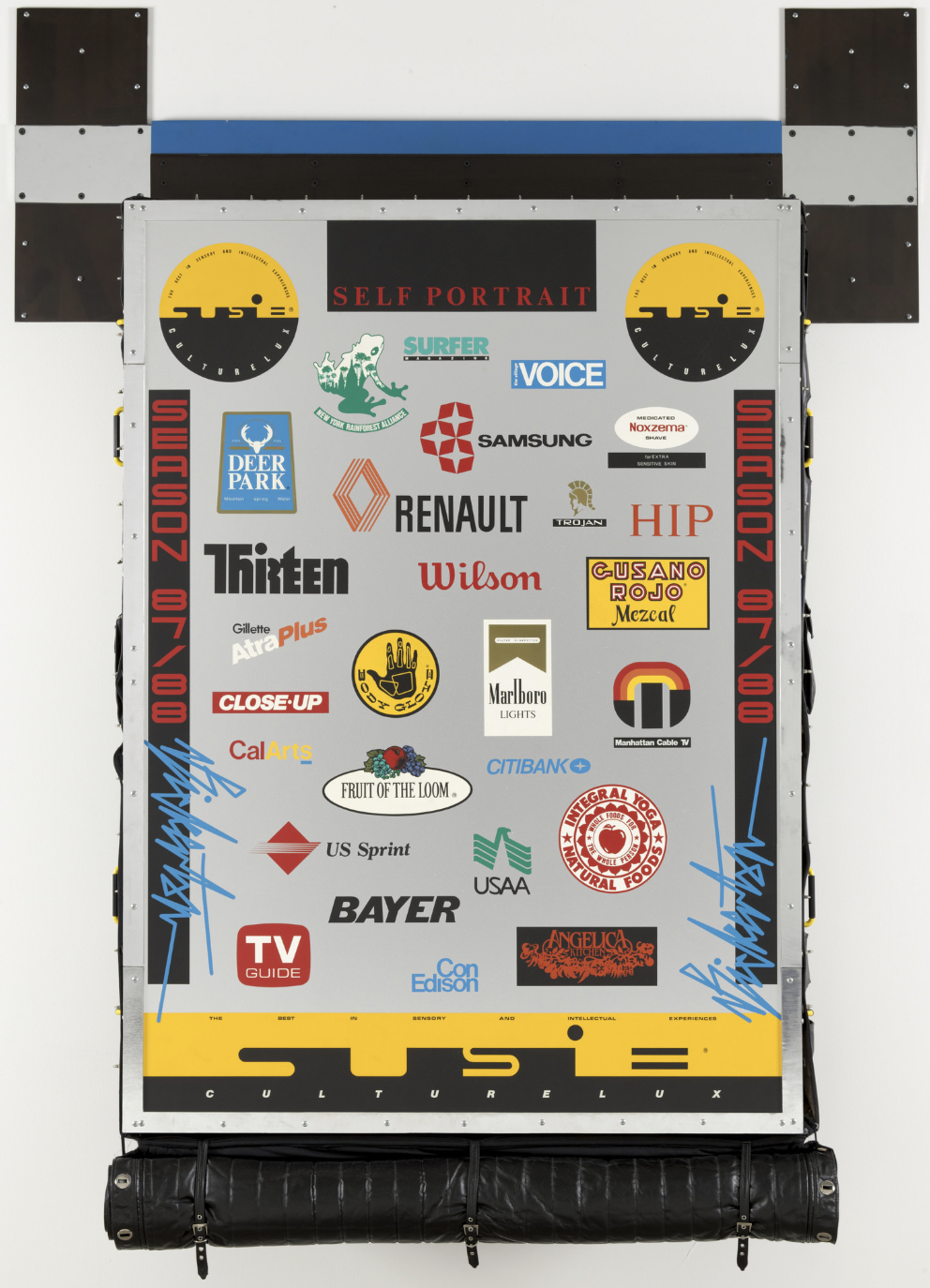
‘Tormented Self-Portrait (Susie at Arles)’ (1987-1988) MOMA Collection
Decamping to Bali a decade later, Bickerton’s work took a figurative turn with canvases populated by hyperbolic tropes associated with exotic island living. Resisting easy moralizing and hyper-aware of his own complicity in the mechanisms of the art world, Bickerton would reflexively apply the same critique of branding found in his early New York works to his own positioning as an artist in the tropics: in a photograph staged for Greek collector Dakis Joannou’s book Monument to Now, the artist composed the ultimate send-up by recreating all the fantasies his audiences wanted to believe of his new life in Bali.
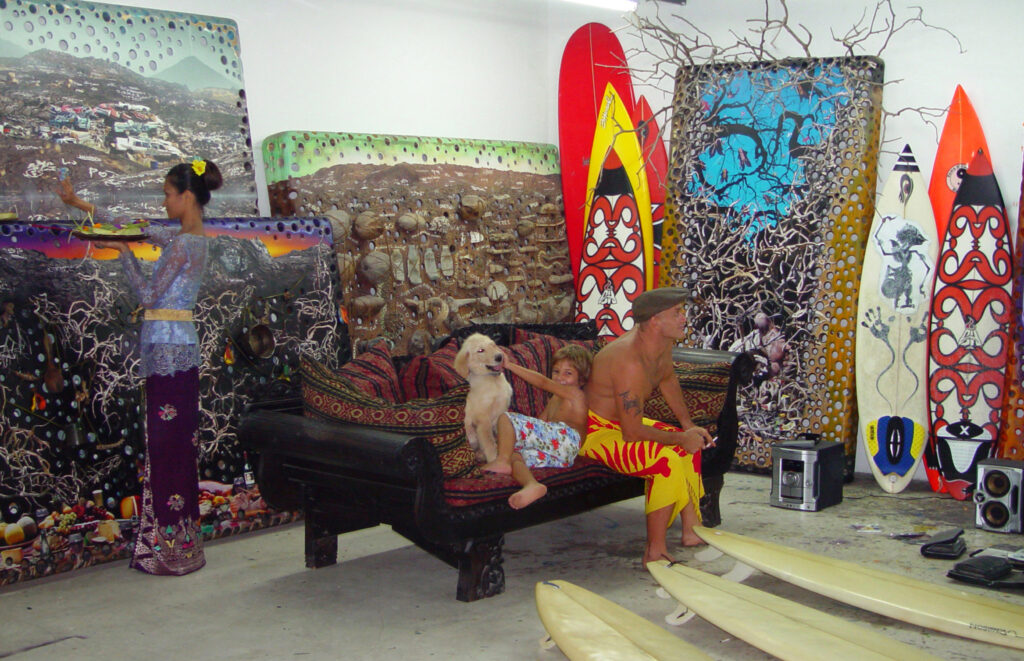
Ashley Bickerton in his Bali studio, 2005.
“I began to draw on the collective fantasy of this life I was supposed to be leading. I gathered children, and pregnant women, and pig heads, and coconuts, and I fabricated this incredible, colorful island world.” [1]
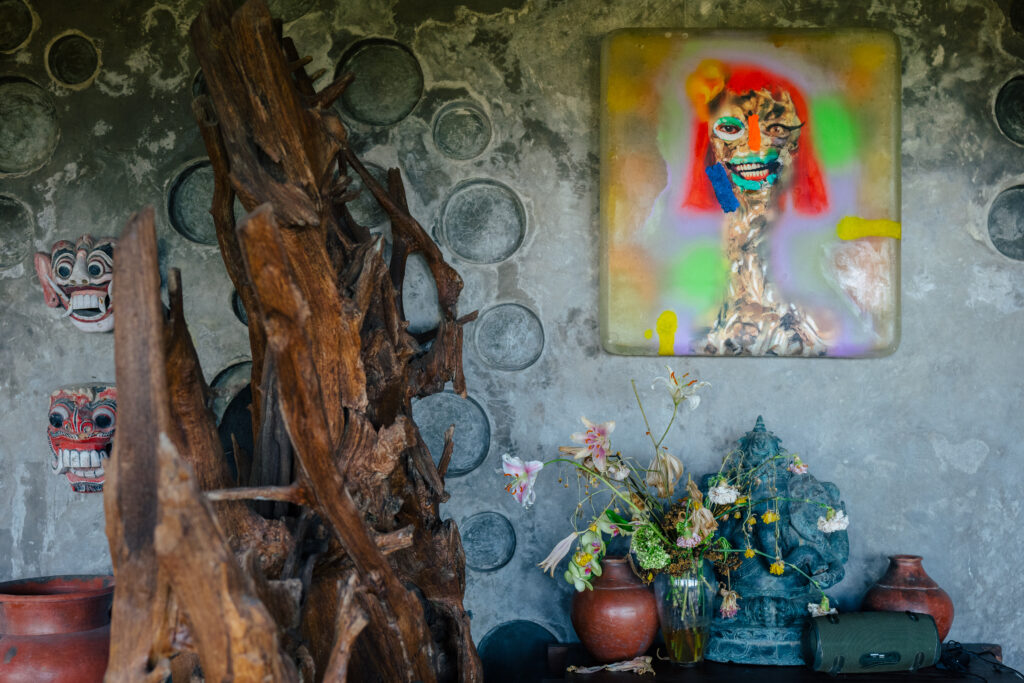
Ashley Bickerton’s Bali studio.
During Bickerton’s time in Bali, memorable characters (or alter egos) like the ‘Blue Man’ emerge, in florid tableaus augmented by ornate frames, their deliberate excessiveness a metaphor for the hedonism and abandon that Bickerton often observed in contemporary Bali. As Bickerton put it, “I’m interested in the liberating aspect of being totally untethered, let loose in the worst possible environments”. [2]
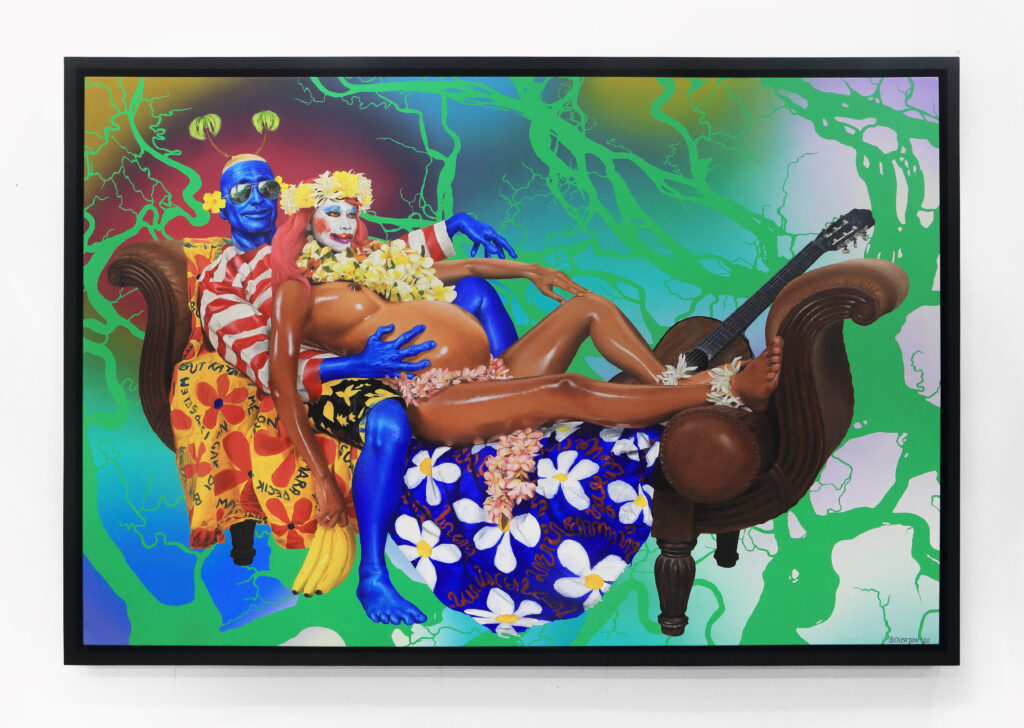
Ashley Bickerton, Pregnant Woman, 2020
Image courtesy Gajah Gallery and the artist
There is a similarly disquieting quality to his portraits of women. His ‘Silver Girls’ are often armed to the hilt with tropical tropes: bare breasts, sarongs, flowers, ukuleles. Yet, these hypersexualized figures are unnerving, with their tangled dreadlocks, reptilian gazes, and manic smiles. Some of these ‘girls’, Bickerton reveals, are actually decorated boys. In the artist’s words, “It’s dangerous, racist, sexist – so it’s all the more tempting.” [3]
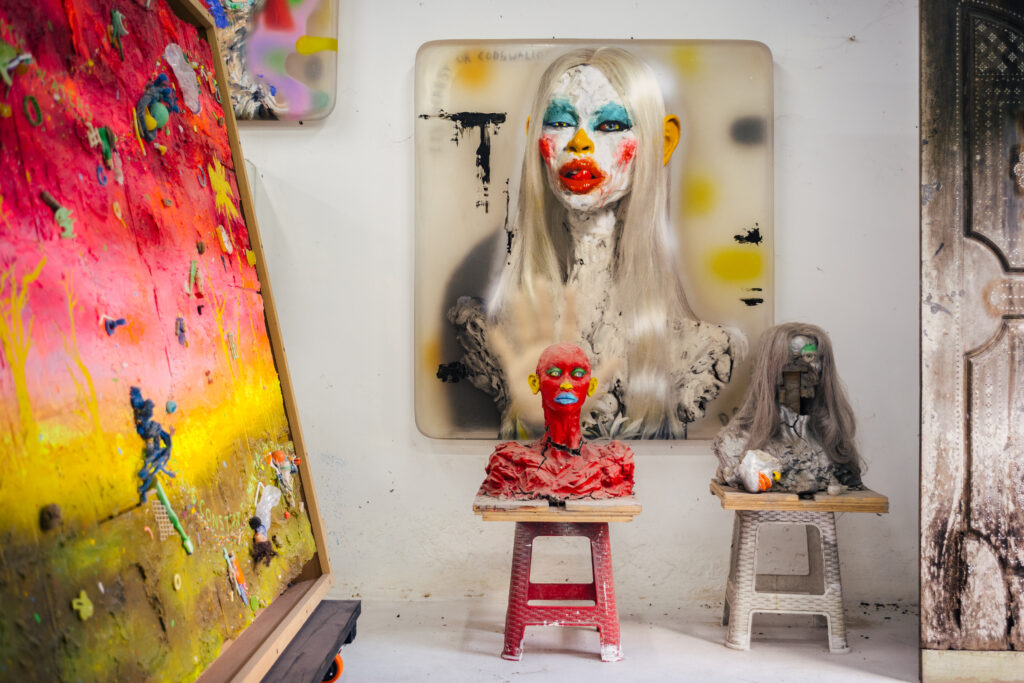
Ashley Bickerton’s studio
A predilection for the apocalyptic finds voice in Bickerton’s flotation devices – essentially survival kits for a time of disaster. These sculptures suggest the aftermath of accidents at sea – with random parts set adrift on the ocean current. Other iterations are more elegiac, with their shiny metal cylinders supporting artefacts unmoored from their original contexts and civilisations, including a tender ‘family portrait’ of footprints in the sand embedded in a resin chunk.
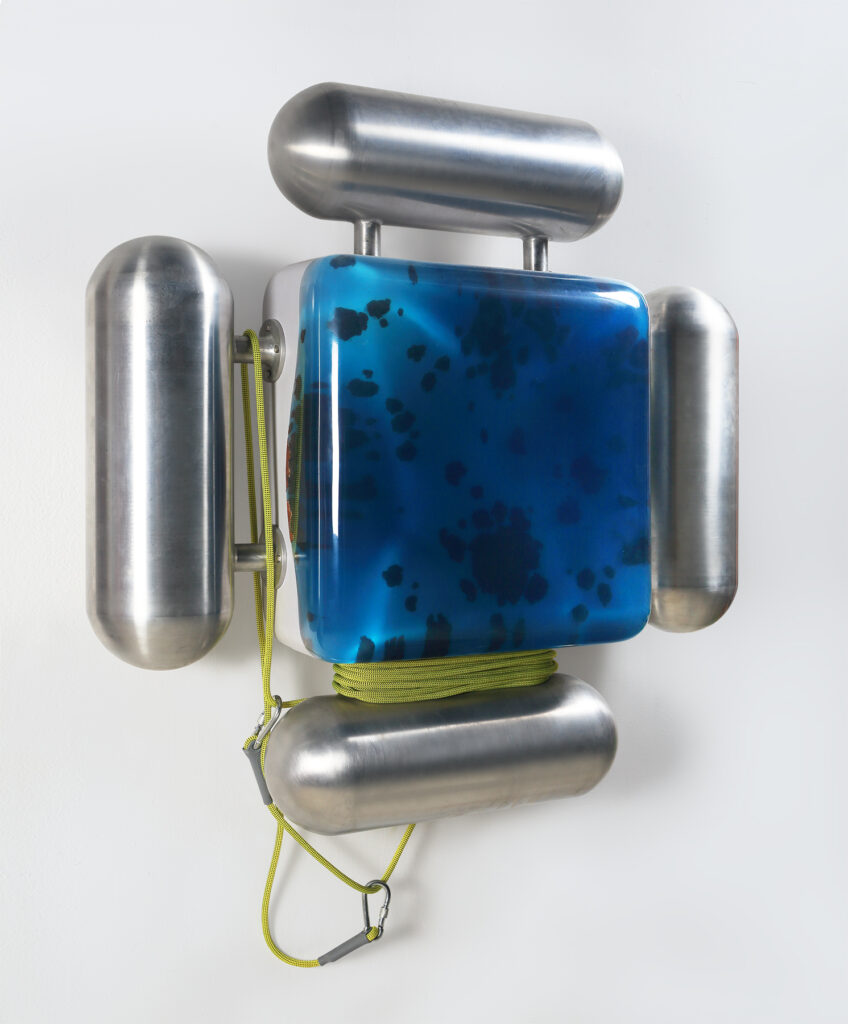
Ashley Bickerton’s Floating Ocean Chunk (South Pacific for North Atlantic) 1 2021.
Resin, Stainless steel, rope and carabiners 127 cm x 127 cm x 33.5 cm. Image courtesy of Ashley Bickerton
An avid surfer, Bickerton sought to make tangible his love for the ocean and refers to his ‘Ocean Chunk’ series as “surrogates for the balm of warm, tropical water”. [4]
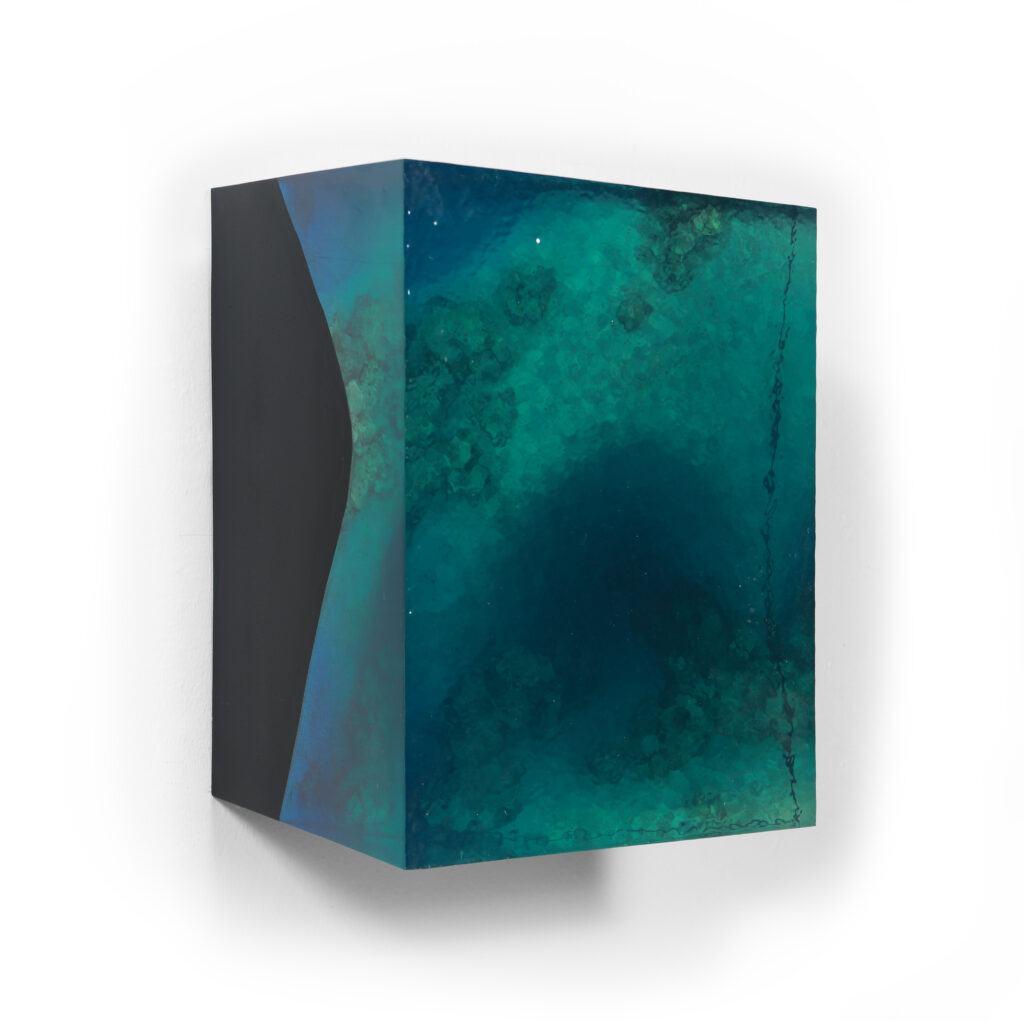
Ashley Bickerton, 1°34’32.4N, 172°55’38.3E 1 Afternoon, 2021.
Resin,Fiberglass,Stainless steel and wood,133 x 175 x 15 cm. Image courtesy of Gajah Gallery and the artist.
At Gajah Gallery’s Yogyakarta foundry, Bickerton created elegant and evocative bronze shark sculptures, inspired equally by the ambivalence of the sea (the shark is dangerous to surfers, but in certain cultures it is also regarded as the embodiment of a god or ancestor) as well as the talismanic qualities of the Polynesian sculptures he had been collecting since his peripatetic childhood.
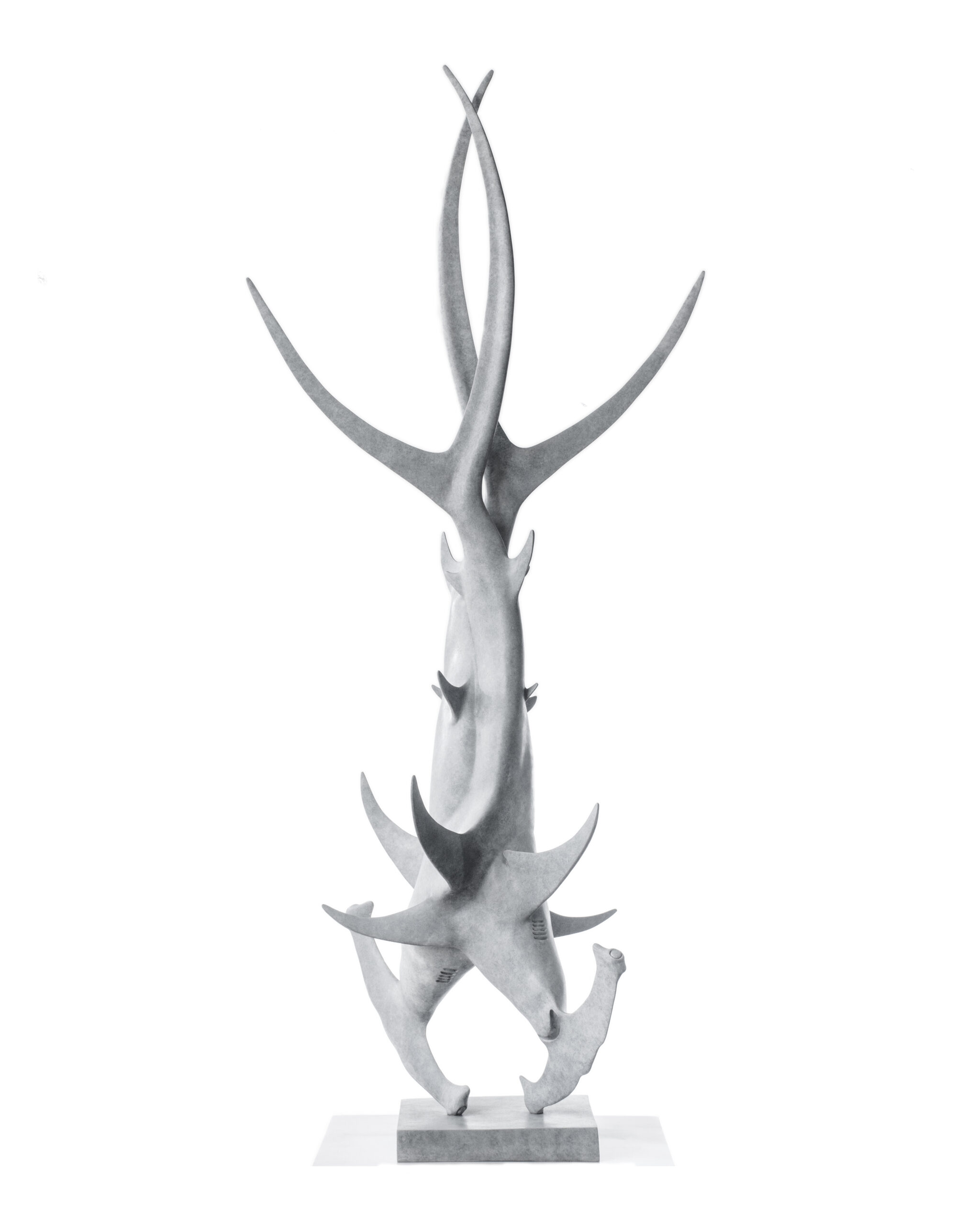
Ashley Bickerton , Double Helix Hammerhead, Cast Bronze , 47.5 x 38 x 109 cm. Image courtesy of the artist and Gajah Gallery.
Bickerton’s relationship with land and water, and his obsession with “the earth/sky binary, matter and emptiness” find form in his acclaimed ‘Flotsam’ series – vivid seascapes swirling with vortices of detritus and debris.
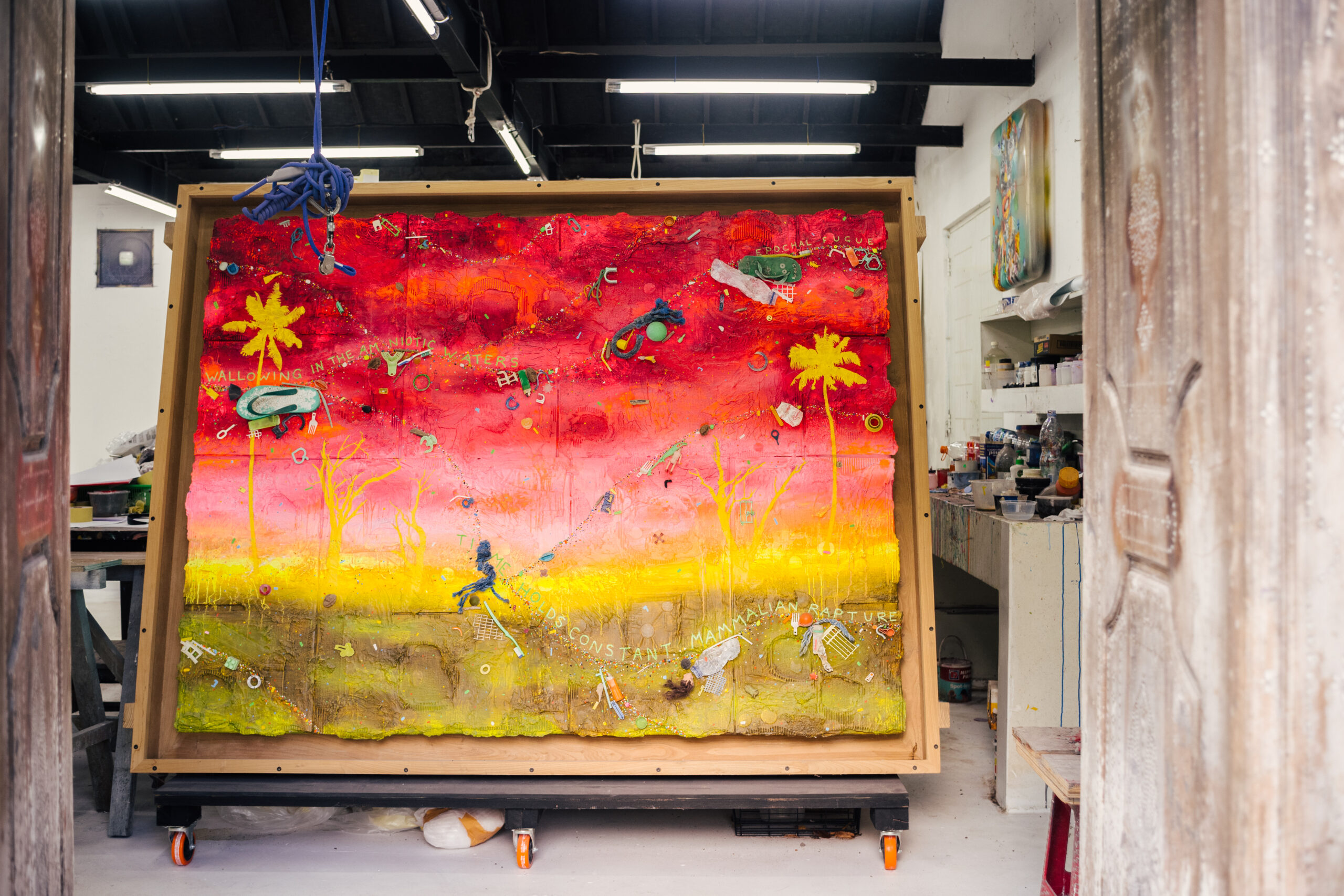

Ashley Bickerton, Flotsam Painting Fire Plane, 2019
Beach Flotsam, Oil and Acrylic on Canvas with Plywood, Glass and Stainless Steel 157 x 213 x 20.5 cm
Image courtesy of the artist and Gajah Gallery
While these could on one hand be read as an environmentalist rebuke, their surrealist colouring and composition evoke instead a sense of cosmic currents. Bickerton states equivocally, “I consider the great gyres of plastic in the Pacific as much a part of the natural order as the migration of wildebeests in the Serengeti. It’s the majesty of molecules…you’ve got great swirling vortexes of molecules as things wash and slush around the planet, and geological time moves on…We’re just one infinitesimal chapter in the enormity of the history of the biosphere.”
[1] “An interview with Ashley Bickerton, Eden’s Anti-Hero” by Emily Nathan, Artnet.
[2] Ibid.
[3] “Paul Theroux on how Ashley Bickerton became an alien in paradise”, The Guardian, 31 Mar 2017.
ABOUT THE AUTHOR: TAN SIULI
Tan Siuli is an independent curator with over a decade of experience encompassing the research, presentation and commissioning of contemporary art from Southeast Asia. Major exhibition projects include two editions of the Singapore Biennale (2013 and 2016), inter-institutional traveling exhibitions, as well as mentoring and commissioning platforms such as the President’s Young Talents exhibition series. She has also lectured on Museum-based learning and Southeast Asian art history at institutes of higher learning in Singapore. Her recent speaking engagements include presentations on Southeast Asian contemporary art at Frieze Academy London and Bloomberg’s Brilliant Ideas series.

Share this article: